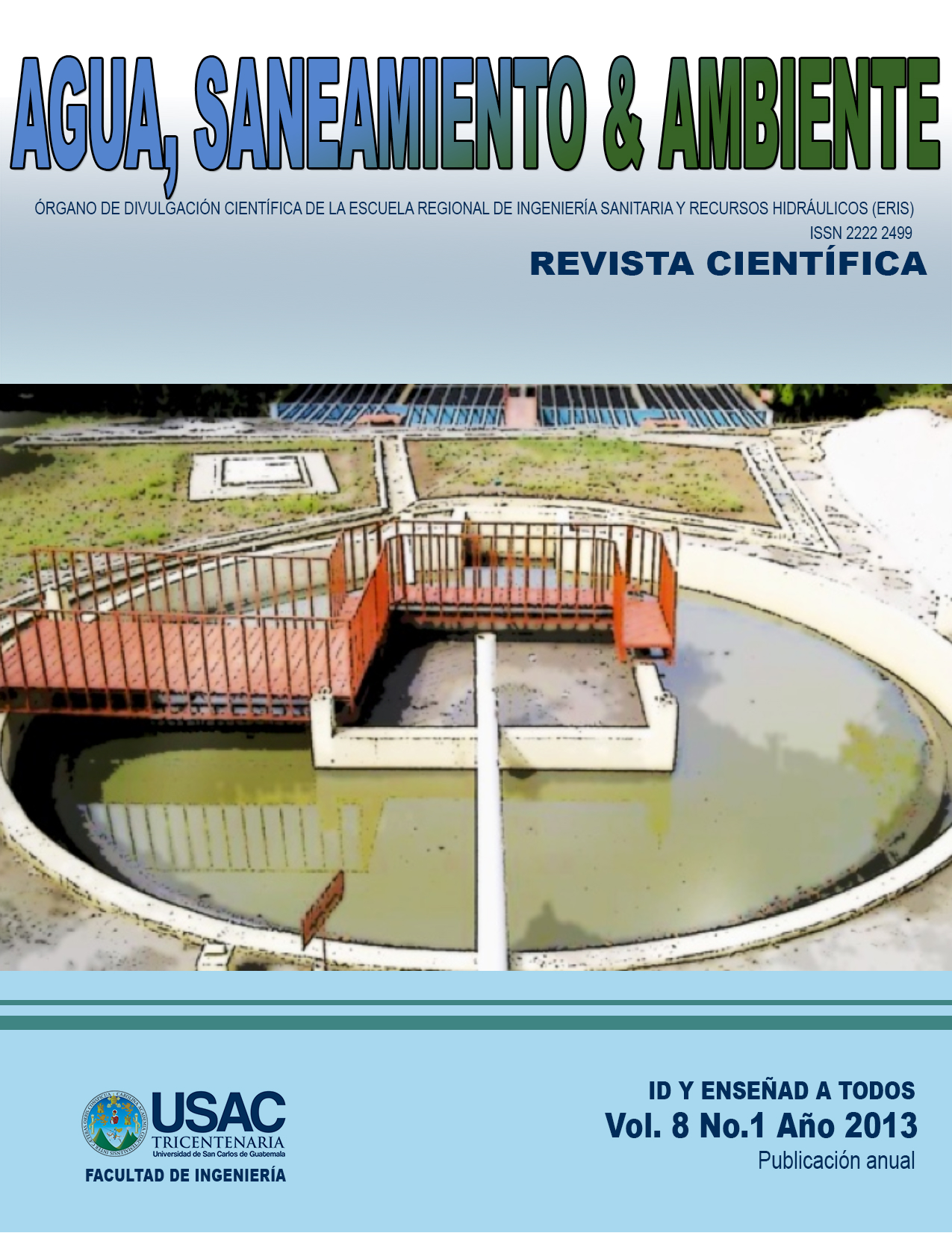UTILIZACION DEL EFLUENTE DE LA PLANTA DE TRATAMIENTO DE AGUAS RESIDUALES CON FINES DE RIEGO EN LA CIUDAD UNIVERSITARIA, USAC
DOI:
https://doi.org/10.36829/08ASA.v8i1.1477Keywords:
Water, wate water, water analysis, water quality, effluent, treatment plant, recycling, reuse, irrigationAbstract
Humanity is able to meet their needs using all renewable natural resources at your fingertips. The renewable natural resources have a current and potential value, they are components of nature. These are: Physical: sun, air and water; Biological: soil animals and plants, which to some extent depends the life of living beings, but in Guatemala every day more scarce, the misuse and exploitation that make of them. This research aims to fully water resources, it raises the reuse of the same, having been treated by a treatment plant wastewater, given its importance requires that piping systems, treatment, discharge and reuse. Any wastewater or waste must be treated both to protect public health, to preserve the environment, as no or improper treatment causes serious pollution problems. Waste water constitute a residue which is not used, from the household, in this case. Consist of all those waters which are conducted by the university and include sewage sometimes rain water and ground water infiltration which is the treatment plant at the University of San Carlos de Guatemala. But we have the opportunity to recycle the raw material is water and reuse it to irrigate the green areas of the USAC, evaluating the benefits that entails, economic and environmental benefits without compromising the satisfaction of the need for irrigation future generations. Thus it becomes necessary to analyze the parameters of wastewater Discharge under the law in force, pursuant to Government 236 - 2006 downloads Regulation and reuse of wastewater and sludge disposal, to determine the water quality and its possible uses in college, and the proposal for such reuse.
Downloads
References
CONGRESO DE LA REPÚBLICA DE GUATEMALA, GT. 2006. Acuerdo gubernativo 236 – 2006 Reglamento de descargas y reuso de aguas residuales y disposición de lodos. Diario de Centroamérica, Guatemala, Mayo 11: Edición electrónica No. 805.
CONSEJERÍA DE MEDIO AMBIENTE DE LA JUNTA DE ANDALUCÍA 1995 Gestión integral del agua, ciclo integral del agua, depuración y reutilización, estrategia de reutilización España Disponible
en: http://www.juntadeandalucia.es/medioambiente/site/webmenuitem.a5664a214f73c3df81d8899661525ea0/?vgnextoid=facaa7ab49be3210VgnVCM1000001325e50aRCRD&vgnextchannel=4d4d1bf6356b5210VgnVCM1000001325e50aRCRD Consultado Mayo 20 de 2009
GISPERT, CARLOS. Enciclopedia práctica de la Agricultura y la Ganadería Editorial Océano, España 1032 p.
HERRERA, ISAAC 1995 Manual de Hidrología, Universidad de San Carlos de Gutemala, Facultad
de agronomía 223 p.
IUPA (Instituto Universitario de Plaguicidas y Aguas) Universidad Jaume I de Castellón – España
Disponible en: http://www.agua.uji.es/pdf/leccionRH28.pdf Consultado 20 Mayo 2009.
SANDOVAL ILLESCAS, JORGE 1989 Principios de Riego y Drenaje Universidad de San Carlos Facultad de Agronomía 344 p.
SEGUI AMORTEGUI, LUIS ALBERTO 2004 Sistemas de regeneración y reutilización de aguas residuales. Universidad Politécnica de Cataluña, Departamento de Biotecnología groalimentaria y Biotecnología, Tésis doctoral en biotecnología agroalimentaria y sostenibilidad Disponible en:
http://www.tesisenred.net/handle/10803/7053 Barcelona, España 256 p. Consultado Mayo 20 de 2009
Downloads
Published
How to Cite
Issue
Section
License

This work is licensed under a Creative Commons Attribution-NonCommercial-ShareAlike 4.0 International License.







